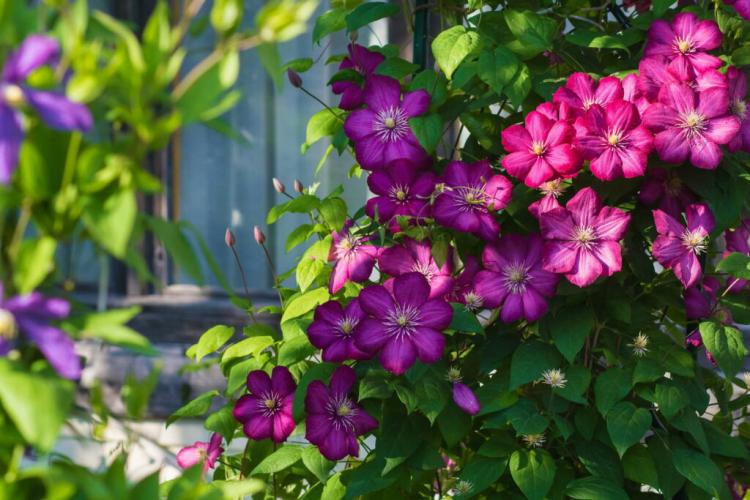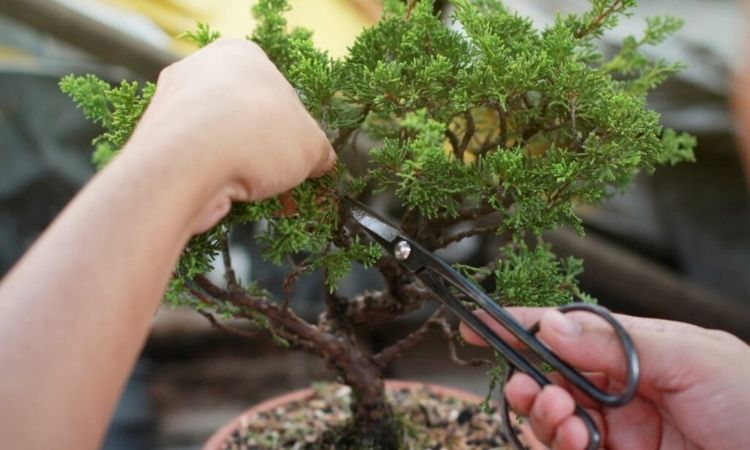How To Prune Roses: When Are They Pruned?
When and how to prune roses? We will show you how to prune roses correctly and what you need to pay special attention to when cutting.
Pruning various types of roses is not as difficult as is often thought. Even as a hobby gardener, with a little practice you can achieve the optimal rose cut.
All you have to do is observe the plants well enough or get enough information to learn about the different growth of the different types of roses and their flowering behavior. In this article, we explain in more detail how to prune your roses correctly.
We will show you what you need to consider in terms of timing and pruning techniques to ensure that your roses grow abundantly and produce numerous flowers year after year.
When To Prune Roses?
Table of Contents
Roses should be cut in spring and only in mild weather. In late frost-prone, unprotected areas, the first pruning can be postponed until May. This is because frost can cause damage to the fresh cuttings and the new budding.
- Plant pruning: It is done in spring (March to May), regardless of whether the rose is planted in autumn or spring.
- Annual spring pruning: This can be done on all types of roses and is also done between March and May. How it is done depends on the growth and flowering of the rose. We will explain in detail what this means in the following paragraphs.
- Annual summer pruning: Summer pruning is limited to the removal of wild shoots and withered flowers. In the latter case, however, there are some differences between the rose types to be discovered.
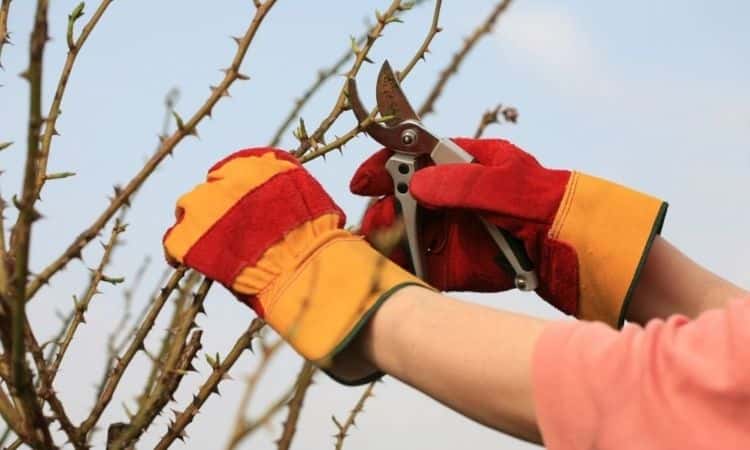
The Correct Procedure For Cutting Roses
The following basic rules should be observed when cutting roses:
- Use sharp scissors for a smooth pruning.
- Always prune over an outward pointing bud or eye.
- Prune about 5 mm above the bud or eye so that it is not damaged.
- Make the cut surface diagonal so that water can drain off.
Planting Cut In Roses
Pruning roses should ensure good rooting and create a balance between roots and shoots. If planting is done in autumn, the pruning is postponed until spring. If planting is done in spring, pruning can be done immediately. You only have to follow a few small and simple rules:
- Root pruning: Shorten the roots to a length of about 20 – 30 cm below the grafting point. This stimulates the branching of the roots and the rose will grow more quickly.
- In shrub and wild roses, all shoots are shortened by half so that they are about 40 cm high.
- Climbing roses are cut back to 10 eyes above the ground.
- All other roses should be shortened to 3 – 5 eyes above the ground.
- The above-mentioned rules for the correct procedure for pruning roses also apply to planting.

Prune Roses In Spring
In spring all roses can be pruned. The following three basic rules apply to all types of roses, according to which the basic pruning is performed:
- Remove deadwood: Dry, frozen wood is removed close to the transition to healthy wood or, if necessary, at the base.
- Remove thin and diseased shoots: these rob the healthy and stronger shoots of the strength to flower. They are completely removed at the base of the plant or at their origin on a stronger shoot.
- Thin out shoots that grow too densely: If the shoots are too close together, the one with the weaker growth or less favorable direction of growth is removed.
- In this way, the air circulation in the rosebush can be improved, thus preventing rose diseases.
From this basic pruning, an individual pruning is then carried out for different groups of roses, which promotes good growth and rich flowering.

We have summarized for you the right cutting technique for each rose group:
| Rose Group | Cut in spring |
|---|---|
| Beetroses | Cut back to 3-5 eyes above the ground. Weakly developed shoots are shortened more than strongly developed shoots. Extremely strong-growing varieties (like ‘Gloria Dei’) are not cut back quite as deep (6 -9 eyes above the ground), dwarf roses much deeper (2 – 3 eyes above the ground) |
| Noble roses | Noble roses also experience a cut back to 3-5 eyes above the ground. Weakly developed shoots are shortened more than highly developed |
| Once flowering shrub roses (flowering in July and July, then decreasing) | At once flowering shrub roses, only the basic cut described above is carried out. If necessary, densely standing or rotting shoots can be removed at the base |
| More often flowering shrub roses (flowering June – September) | With more frequent flowering shrub roses, lightening is easily cleared as needed by removing entire shoots. Older shoots should be removed directly above the ground every 4-5 years |
| Once flowering climbing roses and ramblers (flowering in June and July, then decreasing) | For once flowering climbing roses, only the basic cut described above is carried out. If necessary, densely standing or rotting shoots can be removed at the base |
| More often flowering climbing roses (flowering June – September) | After the first flowering in spring, the side shoots growing on the long shoots are shortened to 3-5 eyes. Only flowering, old long shoots are removed at the very base. How to cut climbing roses correctly, we will gladly explain to you again in detail |
| Ground cover roses | Ground cover roses do not receive an annual ground cut. Every 3-4 years they are shortened to about 30 cm height without regard to the eyes, using a hedge trimmer |
| Rosehip | In the case of wild roses, only the basic cut described above is carried out. If necessary, densely standing or rotting shoots can be removed at the base |
| Old and historical roses | In the case of old and historical roses, only the basic cut described above is carried out. If necessary, densely standing or flowering shoots are removed at the base |
| English Roses | Depending on whether the English roses bloom once or more often, they are treated in the same way as once or more often flowering shrub roses |
| Tree Roses | The crowns of the rose trunks are cut back to 3- to 5 eyes above the finishing site like bed and noble roses |
| Cascade Roses/Mourning Roses | Stems with hanging shoots are treated as once or more often flowering climbing roses depending on their flowering behavior |
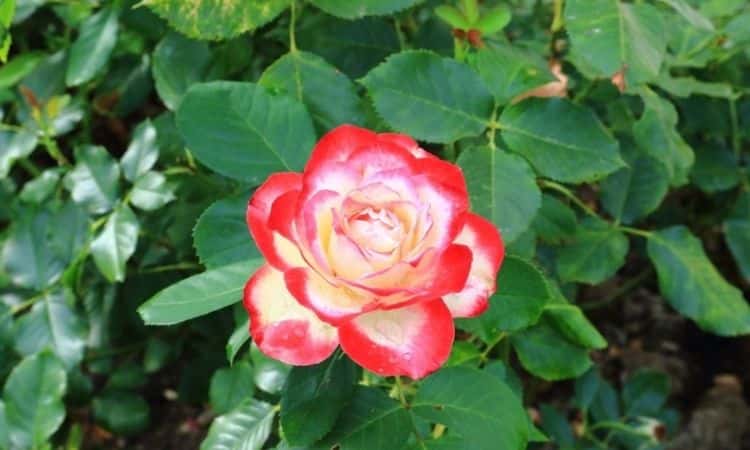
Prune Roses In Summer: Should One Cut Faded Roses?
No more major pruning operations are carried out in summer. Only the removal of wilted inflorescences is pending during this period and here too, each cut should be above an outward-facing eye. This summer cut promotes growth and flower formation.
Tip: If you want to keep rosehips as a bright spot of color in the garden or as food for the birds, you should not cut off withered inflorescences from roses that are in bloom once, because no further flowers will be formed. And even with roses that bloom more often, you should not cut off the flowers in late summer.
Recognizing And Removing Wild Shoots From Roses
In spring and summer, grafted roses – almost all garden roses – can have a wild shoot growing out of the rootstock. Wild shoots can be easily recognized by their smaller, lighter leaves. They also have at least seven or more leaves on a pinnate leaf, whereas grafted varieties usually have five leaves on the pinnate leaf.
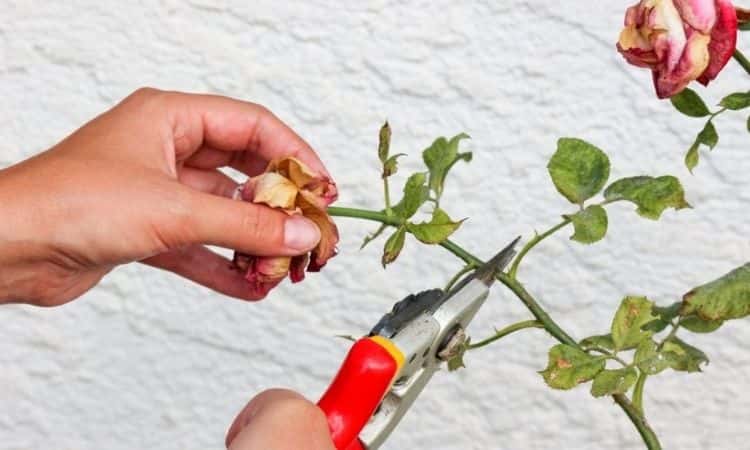
Prune roses in autumn and winter?
In autumn and winter, there is not much to do in rose care. They are not pruned, mainly because a cut might stimulate the formation of new shoots. These young shoots would then be at the mercy of early or late frosts without protection. However, many roses benefit greatly from winter protection. In this case, the grafting place is covered with a small heap of soil, mulch, or fir branches to protect them from frost. Of course, the correct fertilization is especially important for winter-proof roses.





